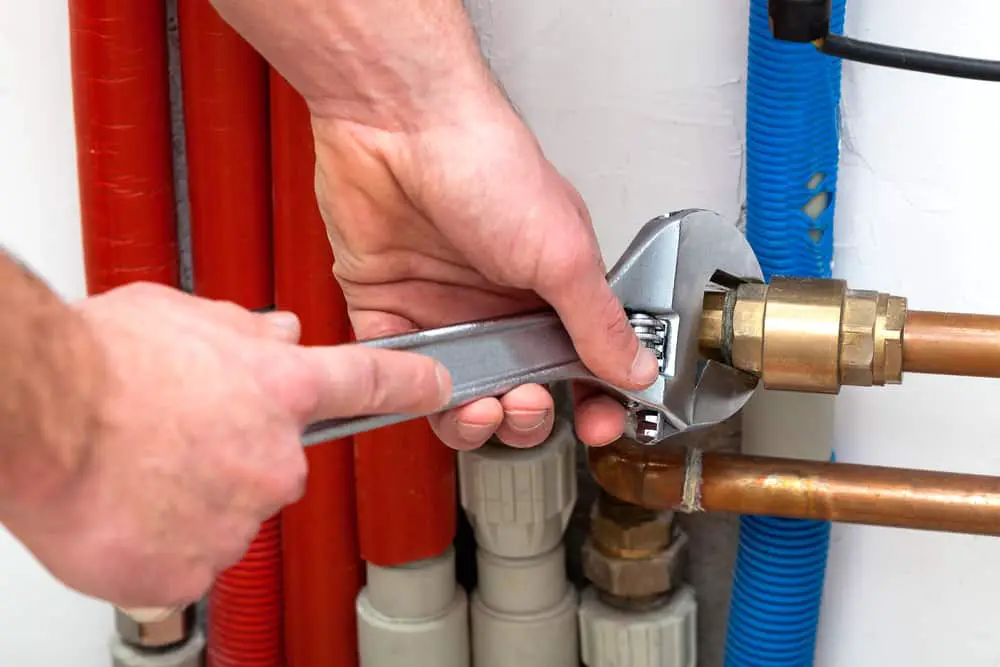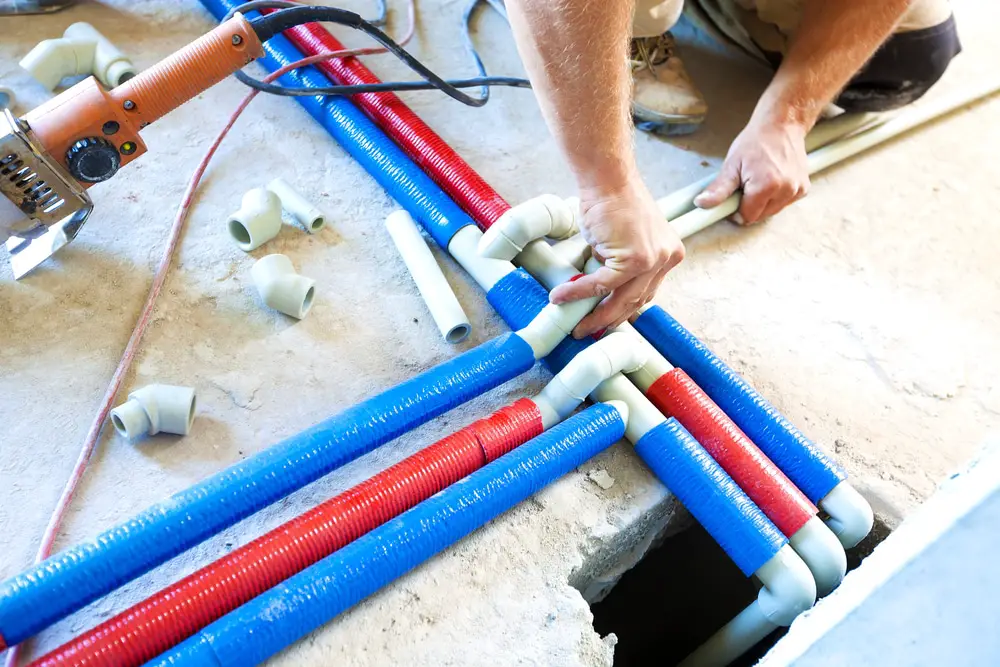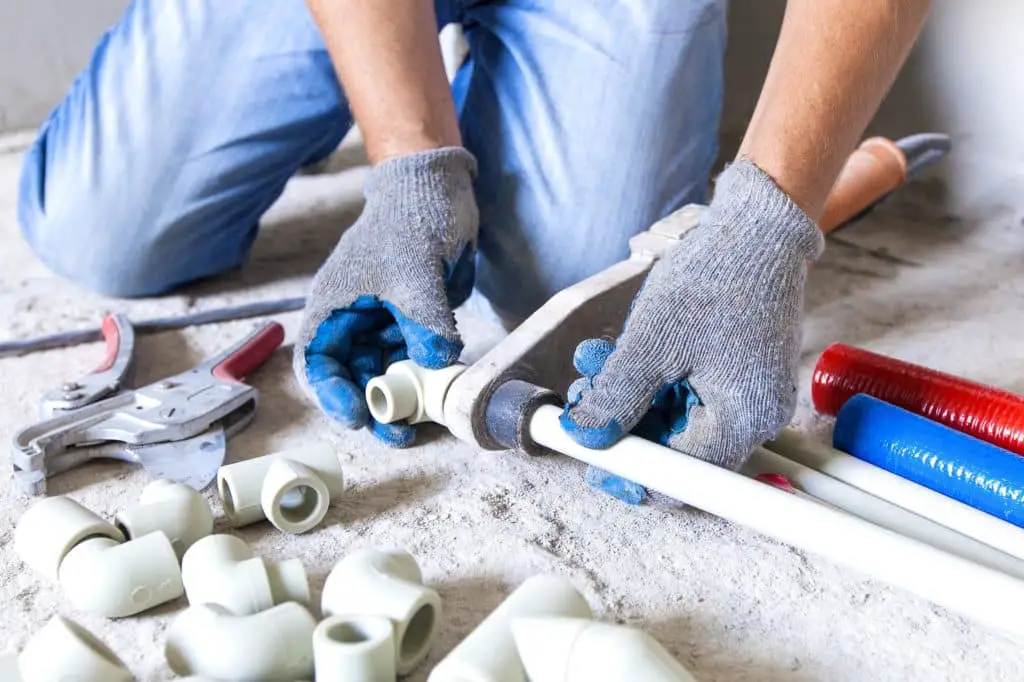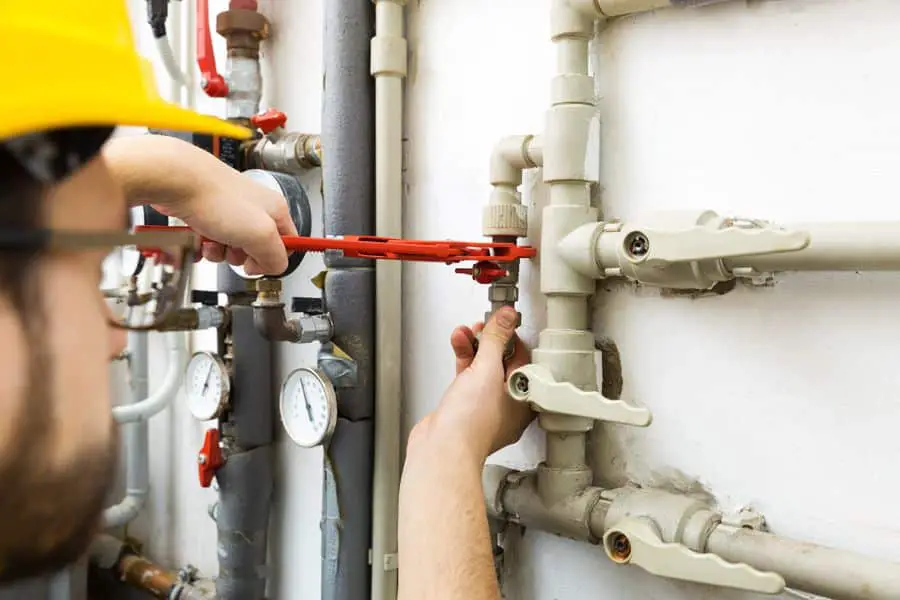How To Loosen Tight Plumbing Fittings
Introduction
How To Loosen Tight Plumbing Fittings: Dealing with tight plumbing fittings can be a frustrating experience. Whether you’re attempting to install new plumbing fixtures or trying to repair a leak, encountering stubbornly tight fittings can make the task seem daunting. However, with the right approach and a few handy techniques, you can effectively loosen tight plumbing fittings without causing damage or undue stress.
Before embarking on any loosening procedure, it’s essential to emphasize the importance of safety. Always remember to turn off the water supply to the affected area before attempting any plumbing work. Additionally, it’s advisable to wear protective gloves and use the appropriate tools to prevent injuries.
One common cause of tight plumbing fittings is the accumulation of corrosion or mineral deposits over time. This build-up can create a strong bond between the fitting threads, making them difficult to loosen. In such cases, using a penetrating lubricant like WD-40 or a similar product can work wonders. Apply the lubricant generously to the fitting and allow it to penetrate for a few minutes. This will help break down the corrosion and make the fitting easier to turn.
Another technique to try is the application of heat. Heating the fitting with a heat gun or a hair dryer can cause the metal to expand slightly, loosening the grip between the threads. Be cautious not to overheat or damage any surrounding components while doing this. Once heated, use a wrench or pliers to apply gentle pressure to the fitting and attempt to loosen it.

What tool do you use to loosen pipes?
These wrenches help tighten, loosen, remove, or replace pipes, which is handy in a time of crisis. Its jaws can be set to accommodate almost any size pipe and are designed to grip round objects firmly. When it comes to loosening pipes, one of the most essential tools in a plumber’s toolkit is the pipe wrench. A pipe wrench, also known as a Stillson wrench or monkey wrench, is specifically designed to grip and turn pipes and other rounded objects. Its unique design and features make it an indispensable tool for tackling tight or stubborn pipes.
The key feature of a pipe wrench is its adjustable, serrated jaws. These jaws provide a strong and secure grip on pipes of various sizes. By adjusting the position of the jaws using the thumbwheel, the wrench can accommodate different pipe diameters, ensuring a snug fit. This allows the plumber to exert force without the risk of the wrench slipping or damaging the pipe.
In addition to the adjustable jaws, the pipe wrench also features a long handle. The long handle serves two purposes: it provides leverage and extends the plumber’s reach. With the extended reach, the plumber can access pipes in confined or hard-to-reach areas, making the wrench versatile and suitable for various plumbing applications.
What is used to loosen and tighten fittings?
Wrenches are made in various shapes and sizes and are used for gripping, fastening, turning, tightening and loosening things like pipes, pipe fittings, nuts and bolts.
To loosen and tighten fittings in plumbing, various tools are commonly used depending on the type and size of the fitting. Here are some commonly used tools for this purpose:
Adjustable Wrench
An adjustable wrench, also known as a crescent wrench, is a versatile tool that can be adjusted to fit different sizes of fittings. It has a movable jaw that can be set to match the width of the fitting. By applying force in the appropriate direction, an adjustable wrench can loosen or tighten fittings effectively.
Pipe Wrench
A pipe wrench is specifically designed to grip and turn pipes, but it can also be used for certain types of fittings. It has serrated jaws that provide a strong grip on rounded objects. The long handle of a pipe wrench allows for increased leverage, making it easier to loosen or tighten fittings.
Pliers
Various types of pliers can be used to loosen and tighten fittings, depending on the specific situation. Adjustable pliers, also known as slip-joint pliers, have jaws that can be adjusted to fit different sizes of fittings. Channel lock pliers, with their adjustable locking mechanism, are particularly useful for larger fittings or those requiring a secure grip.
Spanner Wrench
A spanner wrench, also called a pin wrench, is commonly used for specialized fittings, such as those found in plumbing fixtures or valves. It has adjustable pins or hooks that fit into holes or slots on the fitting, allowing for precise loosening or tightening.
Socket Wrench
A socket wrench is primarily used for fasteners, but it can also be useful for certain types of fittings that have hexagonal or square-shaped heads. By attaching the appropriate socket to the wrench, fittings can be loosened or tightened with ease.
How do you free a stuck pipe?
The solution is to reduce the hydrostatic pressure in the hole until it is equal to the low pressure zone that has you stuck. While circulating, slowly reduce your mud weight by dilution while holding torque on the pipe until it comes free.
Freeing a stuck pipe can be a challenging task, but with the right approach and techniques, it is possible to loosen it. Here are some steps to help free a stuck pipe:
Apply Penetrating Oil
Begin by applying a penetrating oil, such as WD-40 or a similar lubricant, to the threaded area of the stuck pipe. Allow the oil to penetrate the threads for a sufficient amount of time. The oil helps to loosen corrosion and rust, making it easier to turn the pipe.
Heat the Pipe
If the pipe remains stuck after applying penetrating oil, applying heat can help expand the metal and break the bond. Use a heat gun or a propane torch to heat the area surrounding the stuck pipe. Be cautious not to overheat or damage any nearby components. After heating, attempt to turn the pipe using a wrench or other suitable tools.
Use a Pipe Wrench or Adjustable Pliers
If the pipe is still stuck, a pipe wrench or adjustable pliers can provide the necessary grip and leverage to turn it. Position the wrench or pliers on the pipe, ensuring a firm grip, and apply steady, controlled force in the direction required to loosen the pipe. Avoid using excessive force that could damage the pipe or surrounding fittings.
Apply Tapping or Shocking Techniques
In some cases, tapping or shocking the pipe can help break the bond. Using a hammer or a mallet, lightly tap the pipe along its length. Alternatively, you can try using a pipe wrench or a similar tool to apply quick, controlled rotational shocks to the pipe. These techniques can help dislodge any debris or corrosion that may be causing the pipe to stick.
Seek Professional Assistance
If the pipe remains stubbornly stuck or you’re unsure about your ability to free it, it’s best to seek the assistance of a professional plumber. They have the expertise, experience, and specialized tools to handle challenging situations without causing damage to the pipe or other components.
What kind of wrench do you use to turn the nuts on and off of pipes?
The wrench commonly used to tighten and loosen pipes is the pipe wrench.
The unique design of a pipe wrench includes a movable lower jaw and a long handle. This adjustability ensures a secure grip on the pipe, minimizing the risk of slippage during use.
To tighten a pipe using a pipe wrench, position the jaws around the pipe, ensuring a tight grip. Apply force in the direction of tightening or in a clockwise motion using the long handle of the wrench. The leverage provided by the handle allows for increased torque, making it easier to tighten the pipe securely.

What are loosening tools?
Wrenches, open and offset ring ends. Used to tighten or loose any nuts or screw using hands according to size. Tightening and losing tasks of bolts & nuts with different sizes. Open end slogging wrenches. Used to tighten or loose any nuts or screw using a hammer according to size.
Many different types of tools exist specifically for loosening bolts, fittings, or components. Here are some common types of loosening tools:
Wrenches
They include adjustable wrenches, combination wrenches, open-end wrenches, box-end wrenches, and more. Wrenches provide a secure grip on fasteners and allow for the application of rotational force to loosen them.
Pliers
They Pliers are versatile hand tools that come in different configurations, such as adjustable pliers, locking pliers (e.g., vice grips), and needle-nose pliers.
Impact Tools
Impact tools, such as impact wrenches or impact drivers, deliver sudden rotational impacts to generate high torque and loosen stubborn fasteners. They are particularly useful for heavy-duty applications or when dealing with rusted or tightly secured bolts.
How much force should I apply when trying to loosen a tight plumbing fitting?
Apply firm and steady pressure when attempting to loosen a tight plumbing fitting. Avoid using excessive force, as it may lead to damage or breakage of the fitting.
When trying to loosen a tight plumbing fitting, it’s important to apply firm and steady pressure, but you should avoid using excessive force. The amount of force required may vary depending on the specific situation, the type of fitting, and the level of tightness.
Start by applying gentle pressure to the fitting using a wrench or pliers. If the fitting does not loosen, gradually increase the force while maintaining control. It’s crucial to be mindful of not exceeding the recommended torque or force limits specified by the manufacturer.
Applying excessive force can lead to damaging the fitting, causing leaks, or even breaking the plumbing component. It’s important to strike a balance between providing enough force to break the seal and avoiding unnecessary force that may cause harm.
If you find that the fitting remains stubbornly tight despite your efforts, it may be best to seek professional assistance. Experienced plumbers have the expertise, specialized tools, and techniques to handle difficult situations without causing damage or compromising the integrity of the plumbing system.
What if the plumbing fitting remains stubbornly tight?
If the plumbing fitting proves difficult to loosen, you can try using a wrench with a longer handle or attaching a pipe extension for additional leverage. However, it is important to exercise caution and avoid applying excessive force that may cause damage.
If a plumbing fitting remains stubbornly tight despite your efforts, there are a few additional steps you can take:
Apply more penetrating lubricant
Reapply a generous amount of penetrating lubricant, such as WD-40, to the fitting. Allow the lubricant to penetrate for a longer period of time, as it may take time to break down the corrosion or mineral deposits causing the tightness.
Use heat
Apply heat to the fitting using a heat gun or a hairdryer. Heating the fitting can cause the metal to expand slightly, helping to break the seal. Be cautious not to overheat or damage any surrounding components. Once heated, try again to loosen the fitting using a wrench or pliers.
Add leverage
Use a wrench with a longer handle or attach a pipe extension to increase leverage. The longer handle provides more torque, which can help loosen the tight fitting. Be careful not to apply excessive force that could damage the fitting or other plumbing components.
Tap or shock the fitting
Lightly tap the fitting with a hammer or mallet along its length. The tapping motion can help dislodge any debris or corrosion that may be causing the tightness. Alternatively, you can try applying quick, controlled rotational shocks to the fitting using a pipe wrench or similar tool.
When should I seek professional help to loosen tight plumbing fittings?
If you encounter significant resistance, lack the necessary tools, or feel unsure about your abilities, it is best to seek professional assistance. Professional plumbers have the expertise and experience to handle challenging situations and ensure a successful outcome without causing further damage.
Knowing when to seek professional help to loosen tight plumbing fittings is crucial to ensure the safety and integrity of your plumbing system. Here are some situations where it’s advisable to seek professional assistance:
Extreme tightness
Plumbers have the experience, expertise, and specialized tools to handle difficult situations effectively and safely.
Lack of progress
If you have been attempting to loosen the fitting for an extended period without any progress, it’s a sign that the issue may require professional intervention. Continuing to apply excessive force in such cases can risk damaging the fitting, surrounding components, or even causing leaks.
Complex plumbing system
If your plumbing system is complex, with multiple interconnected pipes and fittings, it can be challenging to identify the root cause of the tightness.

Conclusion
By following the steps outlined in this guide, you can increase your chances of loosening stubborn fittings without causing damage or unnecessary stress. Remember to prioritize safety throughout the process. Always turn off the water supply and wear protective gloves when working with plumbing service fittings. These precautions will help prevent accidents and injuries.
Penetrating lubricants, such as WD-40, can work wonders when it comes to loosening tight fittings. The lubricant helps break down corrosion and mineral deposits, allowing the fitting to move more freely. Give the lubricant sufficient time to penetrate before attempting to loosen the fitting. In some cases, applying heat to the fitting can be effective. Heat causes metal to expand slightly, breaking the seal between the threads. However, exercise caution to avoid overheating or damaging surrounding components.
If the fitting remains stubbornly tight, consider using a wrench with a longer handle or attaching a pipe extension to increase leverage. Apply gentle pressure and avoid excessive force to prevent damage. Patience is crucial during this process. Rushing or forcing the fitting can lead to unintended consequences. If you encounter significant resistance or are unsure of your abilities, it’s best to seek professional assistance. Professional plumbers have the expertise and tools to handle difficult situations.








